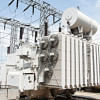Power plants near Sundarbans
We are all for adding to the current level of power generation, but without adversely affecting the ecology. We, therefore, concur with the recommendation of the National Committee to Protect Sundarbans, a citizen platform of 101 eminent activists and scholars, that the development activities of Rampal power plant and the adjacent private Orion power plant should be held in abeyance until a new environment impact assessment (EIA) is conducted by a UN-led independent team. The committee, which has consistently highlighted the dangers of constructing a coal power plant only 14 km away from the largest mangrove forest in the world, has also urged Unesco to recognise the Sundarbans on the list of its World Heritage in Danger.
Environmental experts, both in the country and abroad, have raised serious concerns about the EIA approved by the Department of Environment on August 5 2013, arguing that the assessment was flawed, unscientific, and downplayed the severity of the environmental cost of the project. Notably, the EIA was carried out by a government-owned institution rather than a non-partisan body, which may well give rise to questions. It is telling that the EIA was also rejected by various relevant national and international bodies; The International Union for the Conservation of Nature (IUCN) Bangladesh has also called for an independent scientific EIA. Last year, three French banks and two Norwegian refused to invest in the Rampal power plant for the risks it posed to the critical ecological area and highlighted the limitations with the current EIA.
Environmentalists' demands that the coal power plant be relocated to a different, less environmentally sensitive location have, thus far, fallen on deaf years. The least the government can do is facilitate an independent EIA to objectively determine whether it's safe to carry on development activities in this region.

 For all latest news, follow The Daily Star's Google News channel.
For all latest news, follow The Daily Star's Google News channel. 








Comments